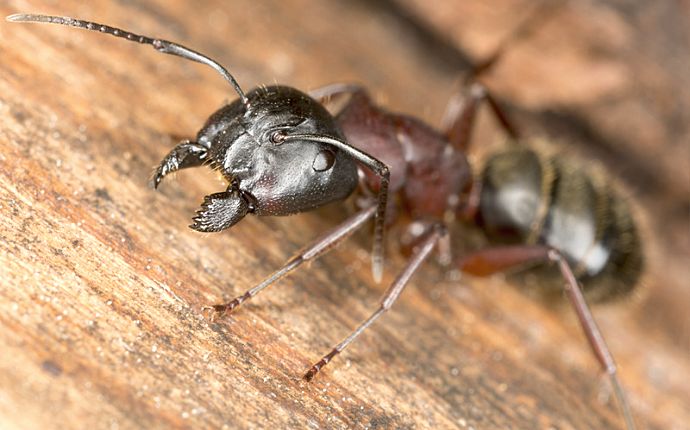Carpenter ants are a common pest for Texans. At first, they may seem similar, but they are much different from termites. Carpenter ants make nests in wood, while termites eat wood.
While carpenter ants can be seen around Texas year-round, they are most prominent in the early spring. During this time, they come out for mating and creating new nests.
While carpenter ants may not have created a problem for you yet, it’s best to be proactive to help guard your Dallas home against infestation. Here are our top five tips for controlling carpenter ants in Dallas.
Carpenter Ant Identification
Carpenter ants are larger than the usual ant at around 6-12 mm in length for the general adult. Their tail ends are all black, while their head, thorax, legs, and antennae are reddish-brown. Carpenter ants consist of winged workers and the queen, which range from 18-20 mm.
It may be surprising, but a carpenter ant nest is not feasting on wood. Instead, they eat sugar and protein, which usually comes from other bugs and plants. But if they find a food source in your house, they’ll go for it.
Carpenter ants are generally nocturnal but come out during the day in warmer months. They are also not generally aggressive unless they feel threatened. Their mating happens in the spring and early summer, after which the queen burrows alone while her eggs hatch.
Damages Caused by Carpenter Ants
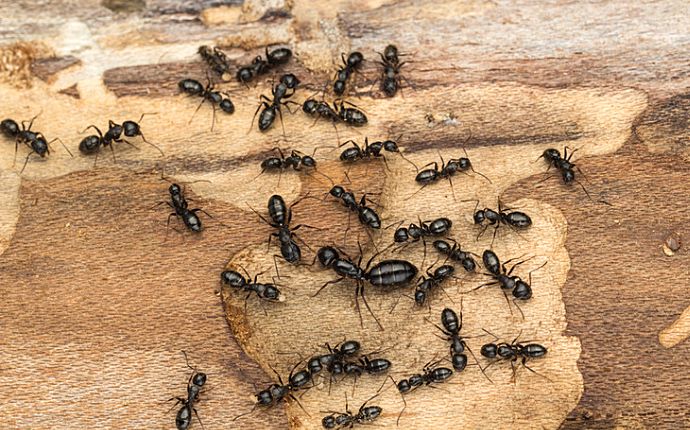
Contrary to popular belief, carpenter ants do not feed on wood. Instead, they damage wood as they tunnel and chew through wood to build nests. They are attracted to warm, moist, protected areas. If they can find a natural crevice in your wall, they may not tunnel as much. If they are tunneling a lot, this could risk the structural integrity of your home.
Carpenter ants may cause minor damage by staying in an isolated piece of wood. However, even if the damage isn’t widespread, signs of them can drop the resale value of your home.
If you see signs of an infestation, act immediately. The longer an infestation goes untreated, the more damage it can cause.
Signs of a Carpenter Ant Infestation
Keep a lookout for signs of carpenter ant infestations in your house. Visually, you may see small openings on the surface of wood, such as a door or window frame. In addition, there may be sawdust-like shavings, insulation pieces, and insect body parts near their tunnels.
Audibly, you may notice a difference in the wood of your home. For example, it may sound more hollow, or you may hear the rustling of the ant colony working.
Another key sign is the ants themselves. You may see the foragers coming out for food year-round. In the spring, maybe you’ve even seen the swarmer ants flying on your home, looking to begin new colonies.
Finding Carpenter Ant Nests
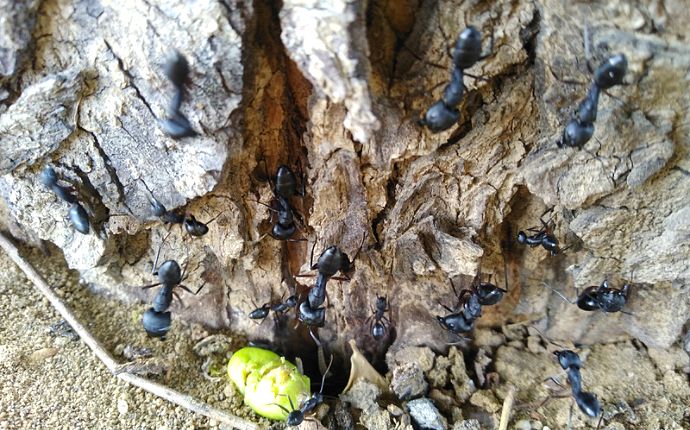
Carpenter ants prefer moist wood or structures already damaged by fungus or insects. In the wild, this may be a tree or tree stump.
If an area of your home has excess moisture, it is especially susceptible. Carpenter ant nests commonly occur within decaying wood, such as bath traps, chimneys, door frames, sinks, and windows. They’re also common in hollow spaces such as wall voids.
Crushed insects around the house or beside large trees after sunset may indicate an infestation. Still, nests are difficult to find, and professional help is often needed. So don’t hesitate to call experts for treatment.
There are two different types of carpenter ant colonies you may be dealing with: parent colonies and satellite colonies. A parent nest contains the queen ant, workers, and broods. A satellite nest may have workers, mature larvae, and pupae.
5 Tips for Controlling Carpenter Ants
- Correct any moisture problems that exist around the home
- Get rid of or replace any water-damaged or decayed wood.
- Fix leaks, gaps in siding, or faulty plumbing.
- Seal up potential entry points
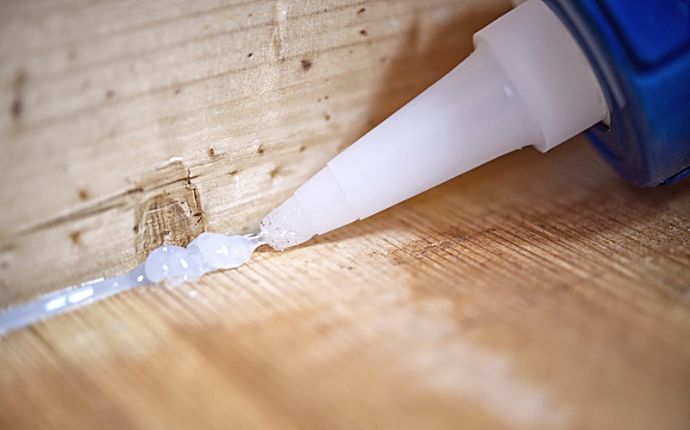
- Use silicone-based caulk to seal up any cracks or little openings around the bottom of doors, between floorboards, or around windows.
- Install weather strips and door sweeps.
- If you see signs of a previous entry, spray or bait the area.
- Make your yard uninviting
- Remove or repair broken branches and any other damage or holes in healthy trees.
- Trim down overgrown shrubbery and trees away from the house.
- Store firewood properly
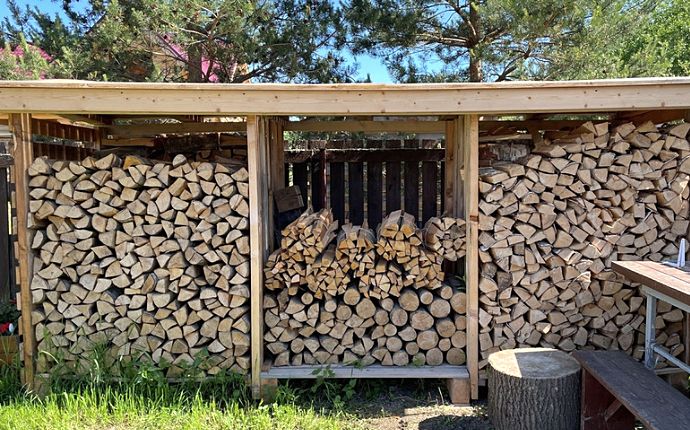
- Keep firewood off the ground, away from the house.
- Only bring firewood inside that will be used immediately.
- Call the pros
- Nothing beats a professional approach when it comes to controlling carpenter ants.
- Whether you have found their nest or just suspect an infestation, pest control experts can help.

